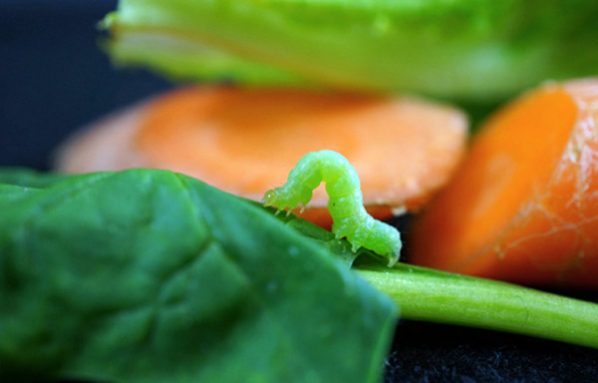The cabbage’s clock
Plants continue their biological routines even after being picked
Share this:
- Share via email (Opens in new window) Email
- Click to share on Facebook (Opens in new window) Facebook
- Click to share on X (Opens in new window) X
- Click to share on Pinterest (Opens in new window) Pinterest
- Click to share on Reddit (Opens in new window) Reddit
- Share to Google Classroom (Opens in new window) Google Classroom
- Click to print (Opens in new window) Print

A newly harvested plant, fruit or vegetable does not turn off — like a switch — and die, scientists report. Instead, an internal “clock” inside the fresh-picked plant continues to tick away. It responds to light and darkness, just as when it had been rooted in the soil.
Biologists refer to the chemical processes that turn food into usable energy as metabolism. And even after plants are harvested, “they’re still metabolizing,” study leader Janet Braam told Science News. “They’re still alive.”
All living things contain an internal clock that runs on a roughly 24-hour — also known as circadian — cycle. It is guided by, and roughly matches, the length of a day on Earth. Braam, a biologist at Rice University in Houston, Texas, studies these clocks in plants living in the ground.
She and her coworkers recently found one clock-driven process in plants that produce chemicals to repel caterpillars. The plants produce that insect repellent at the time of day when hungry insects are most likely to stop by.
But these clock-driven chemicals don’t just keep insects away. Some of these same compounds also offer human diners health benefits. When Braam’s son heard about these discoveries, he joked that now he knew the best time to eat his veggies.
That got Braam wondering: Do the clocks of plucked plants keep ticking? And would plucked vegetables keep making their compounds on a schedule?
To find out, Braam’s team went grocery shopping for cabbages. Then the researchers put the veggies under lights for 12 hours each day. There were two groups of cabbages. Each had a light-dark cycle opposite of the other. So while one group was lit, the other was in the dark. Braam’s team then probed whether hungry insects could tell the difference.
When caterpillars and cabbages were on the same cycle — both used to seeing light at the same time each day — the insects didn’t get much of a meal. But if the caterpillars were starting their day when the cabbages were ending theirs, the caterpillars ate plenty. They ate 20 times as much cabbage as did insects that were living on the same day-night lighting schedule as the veggies.
These results suggest that the cabbages made far less insect-repelling chemicals during darkness. And this held true for cabbages that experienced light during the day or during what should have been the night. That was one sign that the scientists could reset the plant’s internal clocks by shifting when it encountered light and when its world went dark. Changing when light occurred changed the production of chemicals in other types of produce, too, including blueberries and zucchini.
Braam and her coworkers now suspect that fruits and vegetables may be more nutritious if they’re stored in alternating cycles of light and dark, instead of the always-dark refrigerator.
Some other scientists are skeptical, though, that storing veggies under light for part of each day might make them more nutritious. The circadian clock shuts down after only a week, according to the new study. Yet cabbages may be stuck in cold storage for months after being picked — long before they ever reach a diner’s grocery basket, says Cathie Martin. She’s a biologist at the John Innes Centre in Norwich, England.
“But maybe I’ll be proven completely wrong,” Martin told Science News. “Maybe one day we’ll all have little [timed lights] in the fridge.”
Power Words
circadian Recurring naturally on a 24-hour cycle.
biology The study of living things.
metabolism The chemical processes that occur within a living organism in order to maintain life.







